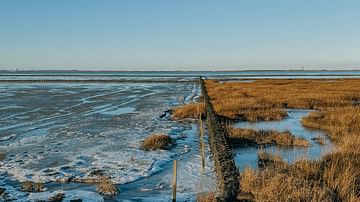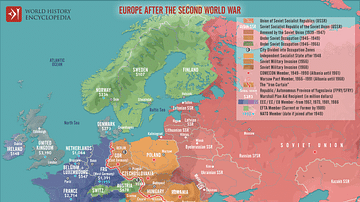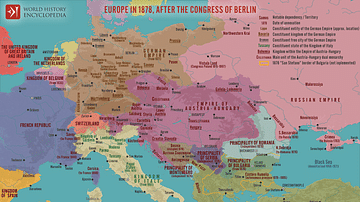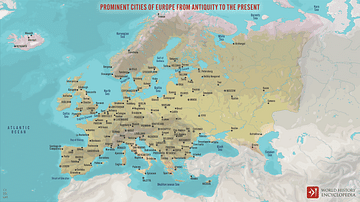Search
Search Results

Image
The Coastal Landscape of Wadden Sea, Northern Germany
Brown grass on a body of water at Norden, Germany.

Definition
Batu Khan
Batu Khan (l. 1205-1255 CE) was a grandson of Genghis Khan and the founder of the Golden Horde. Batu was a skilled Mongol military commander and won battles from China to Persia, although his most famous exploits involve the grand Mongol...

Article
The Ancient Celtic Pantheon
The ancient Celtic pantheon consisted of over 400 gods and goddesses who represented everything from rivers to warfare. With perhaps the exception of Lugh, the Celtic gods were not universally worshipped across Iron Age Europe but were very...

Image
Europe After World War II (1945 to c. 1989)
This map illustrates the realities in Europe after the Second World War (1939-45), as the continent was divided between the Western bloc, backed by the United States, and the Eastern bloc, controlled by the Soviet Union. To rebuild Western...

Video
Incredible Resilience | The Untold Journey of the Northern Cheyenne After Custer's Last Stand
In this captivating exploration, we delve into the untold story of the Northern Cheyenne after Custer's Last Stand. On June 25, 1876, General George Armstrong Custer faced an overwhelming force of Lakota and Cheyenne warriors at the Battle...

Image
Map of the Migration Period in Europe in the 4th-5th Century
This map illustrates the Migration Period in Europe during the 5th century CE, a time of dramatic upheaval that reshaped the political and ethnic landscape of Europe and Western Asia. Following the division of the Roman Empire after the death...

Image
Map of Europe Before the Fall of Constantinople, c. 1450
This map illustrates the political landscape of Europe, East Asia, the Middle East, and North Africa around the year 1450 CE—a pivotal moment on the eve of major geopolitical transformations. At this time, the Byzantine Empire clung to its...

Image
Europe after The Treaty of Versailles
This map illustrates the situation in Europe in November 1920 in the aftermath of First World War (1914-18), as the continent was reshaped by the Treaty of Versailles (1919) and the Treaty of Sèvres (1920). The German Empire had collapsed...

Image
Europe in 1878 after the Congress of Berlin
The Unification of Italy and the Creation of Germany in the mid-19th century, alongside the Congress of Berlin in 1878, redefined the political landscape of Europe, consolidating fragmented states into unified nations while reshaping alliances...

Image
Prominent Cities of Europe from Antiquity to the Present
A map of Europe displaying important cities that shaped its history, from antiquity to the present. Cities on the map represent key centers throughout history. Each city represents a distinct period from Athens, Rome, and Constantinople (now...